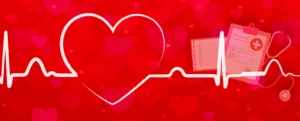Emergency Room: Go For Chest Pains and Heart Attack
When your chest feels tight, and pain is stemming from your heart, you are most likely thinking of a heart attack and need to rush to the emergency room. About seven million Americans visit the ER every year, fearing that they’re about to have or are having a heart attack.
Although chest pain is one of the many signs of a heart attack, it doesn’t necessarily imply that you’re having one. So how can you decide if the chest pain you are experiencing warrants a trip to the ER? At FrontLine ER, we experience a higher number of such cases and are willing to share with you information about heart attacks, chest pains and how soon you should seek treatment.
Facts about Chest Pain and Heart Attacks
According to The Centers for Disease Control (CDC), it is estimated about 790,000 Americans encounter a heart attack each year, and nearly half of the deaths happen at home or places of work.
A heart attack, which is correctly termed as myocardial infarction, is whereby one or more of the arteries that supply blood to the heart muscle are blocked. A cholesterol plaque raptures within a blood vessel which then causes the formation of a blood clot that closes the vessel completely.
Experiencing chest pain, pain in the upper back and abdomen occurs because your heart is not getting enough oxygen-rich blood. For diabetic patients or the elderly, there may not be any pain but just weakness or shortness of breath also known as ‘silent heart attack’. If not checked sooner, your heart could receive more damage. So, by deciding to get emergency care soonest, you are guaranteed better chances of surviving a heart attack.
Causes of Chest Pains That are heart-related
- Aortic Dissection. Aorta is an artery that carries oxygenated blood from the heart. People who have hypertension and other diseases can cause this artery to split the layers thus causing severe pain. This is a life-threatening condition which can be treated by controlling blood pressure and in some cases, surgery may have to be performed.
- Angina. It is a symptom of chest pain which occurs because of less blood flow to the heart muscle through restricted coronary arteries. Angina is unstable when it is new onset and worsens in frequency or severity. It is crucial to recognise unstable angina soonest because a significant number of patients can experience heart attacks within a short period.
- Pulmonary Embolism. This is a condition whereby blood clot from anywhere in the body, usually the legs or pelvis, travels through the blood circulation into the lungs. This can damage the lungs and minimise the ability of the lungs to absorb enough oxygen. The condition is accompanied by chest pains, mainly when taking a deep breath as well as shortness of breath.
Symptoms of a Cardiac Chest pain
- Sharp pain and pressure that usually starts behind the breastbone. It can also be experienced from the shoulders, arms, jaw neck and throat
- Shortness of breath
- Nausea or vomiting
- Lightheadedness or dizziness
- Cold sweats
- Unusual fatigue
When to Go To the ER
If you experience any of the cardiac chest pain symptoms mentioned above, please visit the FrontLine ER. Our emergency doctors are specialists in the diagnosis and treatment of chest pain; which may be a leading cause of cardiac arrests. We have the cutting-edge diagnostic equipment to help in the analysis of the cause of your chest pain.
If the chest pains that you’ve experienced before are temporary or subside when you change positions, then it might not be a medical emergency. However, it’s still recommended that you go for checkups often. If you address the symptoms early enough, you may be able to get immediate treatment to prevent future complications.
Diagnosis and Treatment
Diagnosis is made by physical examination and history evaluation to rule out between cardiac and non-cardiac causes of chest pain. It is essential because any heart-related chest pain requires immediate involvement and treatment. It is common for medical personnel to obtain a chest X-ray and an electrocardiogram (EKG). Basic metabolic profile and blood tests are also beneficial during the evaluation.
Cardiac chest pains may be treated with medications or more invasive procedures such as coronary bypass surgery. This surgery is performed to restore normal blood flow to a blocked coronary artery; by diverting the course of blood flow to a section of the blocked vessel thereby easing pain around the heart.
By choosing to live a healthy lifestyle which includes low-fat foods, fibre, and exercise, helps reduce the risk of encountering a heart attack and associated chest pains. Choosing not to smoke goes a long way in maintaining a healthy lifestyle.
According to FrontLine ER, everyone’s experience may be very different, so trust your instinct if you think something is wrong or are experiencing unusual symptoms. It’s safer to check in with your specialist and do regular physical exams to keep up with your heart health.




